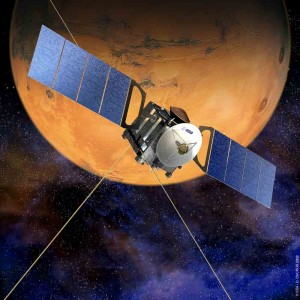The Mars Express Mission

Source: ESA
Mars Express was launched on June 2, 2003, as the first European planetary mission to Mars from the Baikonur Cosmodrome in Kazakhstan. Since December 2003, it has been in an elliptical orbit around the Red Planet. The primary scientific objectives of the mission are to investigate the atmosphere, surface, plasma environment, and subsurface boundary layer of the planet. To achieve this, Mars Express was originally equipped with a total of seven different scientific experiments. Since 2016, efforts have also been made to utilize the Visual Monitoring Camera (VMC), originally intended only for monitoring the Beagle-2 Lander, for scientific purposes. Mars Express initially carried the Beagle 2 lander, which was designed to search for organic traces on the Martian surface. Unfortunately, contact with the lander could not be established after its deployment. Despite this initial setback, Mars Express has evolved into a highly successful mission, prompting repeated extensions beyond its initial planned duration of one Mars year (23 Earth months). As a result, Mars Express remains active even after twenty Earth years.
Scientific experiments
The scientific experiments on Mars Express include:
| Instrument / Investigation | Name | Principal Investigator |
|---|---|---|
| ASPERA | Energetic Neutral Atoms Analyser | M. Homström, Sweden |
| HRSC | High Resolution Stereo Camera | T. Roatsch, Germany |
| MaRS | Mars Express Radio Science | M. Pätzold, Germany |
| MARSIS | Mars Advanced Radar for Subsurfaces | R. Orosei, Italy and J. Plaut, USA |
| PFS | Planetary Fourier Spectrometer and Ionospheric Sounding | M. Giuranna, Italy |
| SPICAM | UV Atmospheric Spectrometer | F. Montmessin, France |
| OMEGA | Visible and infrared mineralogical mapping spectrometer | J. Carter, France |
| VMC | Visual Monitoring Camera | A. Sánchez-Lavega, Spain |
See also: